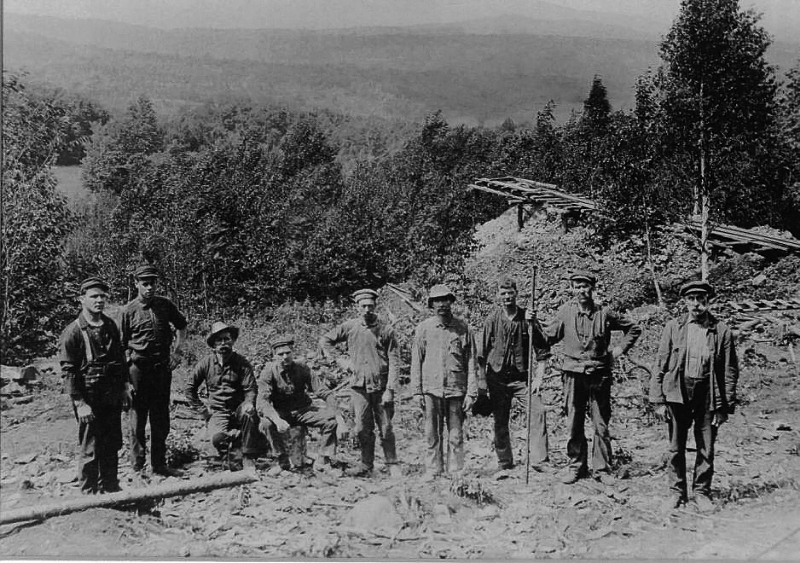Dans son ensemble, le territoire des Cantons-de-l’Est offrait de riches dépôts miniers : fer, cuivre, plomb, or, argent, etc. Ces mines ont autrefois joué un rôle important dans l’économie mais elles ne sont plus exploitées aujourd'hui. Le canton de Potton ne fit pas exception et compta plusieurs mines.
Cuivre
II y eut la mine de cuivre située du côté ouest du mont Hogsback . C'est la compagnie Memphremagog Mining Company qui l’exploita du début du siècle jusque vers 1915 d'où l’on a extrait environ 800 tonnes de minerai durant cette période (Bancroft, 1915).
Amiante
Cette mine désaffectée se trouve au sud-est de Mansonville et comprend un tunnel horizontal, deux galeries latérales et un puits vertical. La mine fut exploitée sur une brève période au début du siècle.
Plomb et argent
Sous le versant sud du mont Owl's Head se trouve une ancienne mine de plomb qui a donné son nom à Leadville un hameau au coin sud-est du canton, près de la frontière du Vermont. L'entrée de la mine s'ouvrait du côté du lac, au bord de l’eau. La prospection minière de 1862 rapporta d'intéressants gisements de plomb (galène) et d'argent. La mine fut exploitée par la Glen Falls Mining Company en 1900 ou 15 hommes furent employés, mais pour un court laps de temps dû au manque de capitaux. Il n'y eut pas d'exploitation subséquente (Darrah, 1977).
Stéatite ou talc
Le long de la vallée de la rivière Missisquoi, du côté ouest s'étend du nord au sud un dépôt de serpentine de type stéatite commercialement connue sous le nom de talc. Des gisements sont identifiés sur une carte de 1860 à la hauteur des chemins Peabody et Traver. Le talc fut exploité par la compagnie Bakertalc Inc. au sud du canton, d'où le nom de chemin de la Mine. Plus tard, ce fut au nord du canton (chemin Bakertalc) et, enfin, dans une mine à ciel ouvert le long de la route 243 entre les chemins Traver et Peabody. Cette dernière opération cessa après quelques années.
The Eastern Townships harbor rich mineral deposits including iron, copper, lead, gold, silver, etc. Mines played an important role in the past but have little or no value today. Potton Township was no exception as several small mines were worked.
Copper
There was a copper mine located on the west side of Hogsback Mountain. At the beginning of the century, the Memphremagog Mining Company operated the mine until around 1915 and extracted about 800 tons of ore. It was later abandoned (Bancroft, 1915).
Asbestos
There is an unused mine located south-east of Mansonville. It has one horizontal shaft, two lateral ones and one vertical. It was briefly worked at the beginning of the century.
Lead and Silver
Below Owl's Head, to the south, was a lead mine which gave its name to Leadville, a hamlet at the south-east corner of the Township near the Vermont border. The entrance to the mine was on the lake side, on the beach. Mining prospecting tn 1862 revealed rich deposits of lead and silver. The mine was operated by the Glen Falls Mining Company with only 15 men but closed after a short time due to lack of funds, never to reopen (Darrah, 1977).
Steatite or Talc
Along the Missisquoi River Valley, on its west side, there is a long serpentine deposit of the steatite type, commercially known as talc. Some deposits were identified in 1860 and a first mine was operated by Bakertalc Inc. in the south of the Township and gave its name to Chemin de la Mine. A second mine operated for years to the north near Bolton, and recently, an open pit mine operated for a few years west of route 243 between Traver and Peabody roads.
